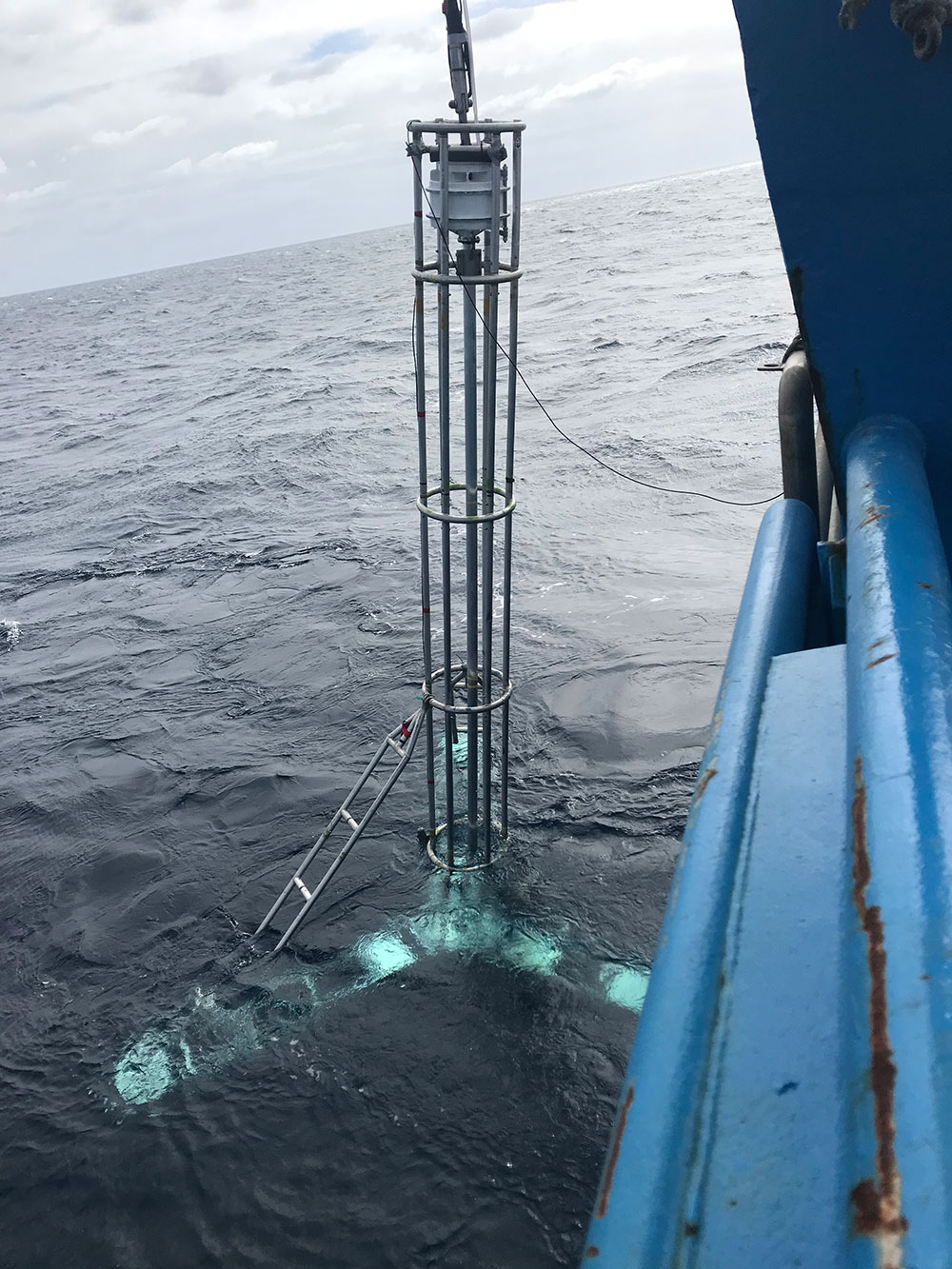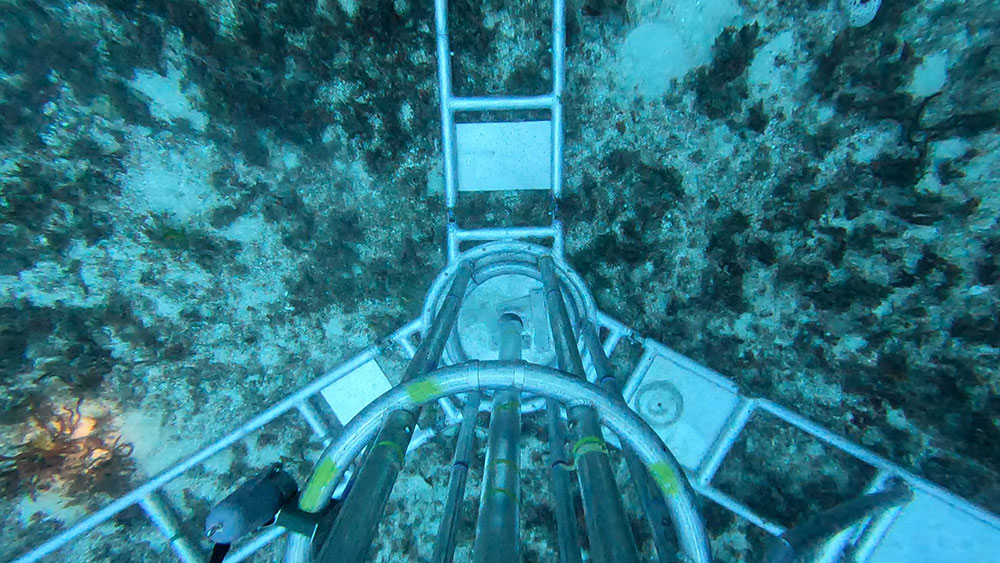Geoscience Australia's Marine Geoscientist Dr Mardi McNeil has been to many interesting places in her career, and her latest voyage to the Great Barrier Reef Marine Park was no exception.
Dr McNeil was co-chief scientist and marine geoscientist on a recent voyage on board the CSIRO research vessel RV Investigator to the northern Great Barrier Reef.
"Broadly, the voyage involved mapping the seafloor and the sub-surface, taking sediment samples, extracting cores, collecting biota, and taking lots of oceanographic and atmospheric measurements," Dr McNeil explained.
These are datasets that will all contribute to Geoscience Australia's Strategy 2028 objective to map and characterise the seabed to support the sustainable management of Australia's marine environment.
"On this voyage we were particularly studying a calcified algae called Halimeda. This is a type of green algae that has a hard internal skeleton similar to corals and can occur in deep water."
Professor Jody Webster of the University of Sydney, also chief scientist on the voyage, described these unusual organisms.
"The internal skeletons are shed and build up over time, thousands to tens of thousands of years, and they form vast geological structures on the seafloor called bioherms," Professor Webster said. "The Halimeda bioherms are a distinctive shape, looking a lot like green doughnuts."
The Halimeda bioherms are fascinating in their own right, and they only get more important in the context of their role in capturing and storing carbon.
"The bioherms potentially store carbon in their calcium carbonate sediments. One of the things we were looking at is their volume and area as a regional geological carbon sink," Dr Webster added.
"They also form a natural non-coral habitat on the seafloor," Dr McNeil said. "So we were exploring their relationship to the deeper undersea landscape—channels, passages, slopes, submarine canyons and basins—and key oceanographic processes."
This voyage was also a first for the RV Investigator, as it was an opportunity to test if Geoscience Australia's shallow-water vibrocoring system, which is typically used in near-shore coastal settings, could be deployed from the vessel.
Dr McNeil was instrumental in trialling this new capability, jointly supported by Geoscience Australia and the CSIRO's Marine National Facility.
"The RV Investigator is an ocean research vessel that typically deploys deep-water coring equipment," Dr McNeil explained.
"We have successfully integrated Geoscience Australia's shallow-water vibrocoring system to be deployed from the RV Investigator. We were really pleased with the outcome as it augments the RV Investigator's already significant science capability."
As the name would suggest, the shallow-water vibrocoring system can be deployed in water depths that are too shallow for the RV Investigator's specialised piston-coring and gravity coring systems.
"We encountered some coarse limestone sediments on this voyage, and the vibrocorer was the perfect tool to penetrate them and get good samples," Dr McNeil said.
The team successfully collected 42 new cores, each up to 6 metres long and representing over 175 metres of new core samples, with invaluable sub-surface information archived within them.
The data will give scientists new information about the geological and biogeochemical processes that have shaped the unique Halimeda algal bioherms over the past 10,000 years. This will help to inform the monitoring and management of this part of the Great Barrier Reef Marine Park into the future.
"Science is a wonderfully collaborative field," Dr McNeil said. "In this voyage I've worked alongside Professor Webster from the University of Sydney, and collaborators from James Cook University, Queensland University of Technology, the University of Queensland, CSIRO, and even the University of Granada in Spain and the University of Tokyo in Japan."
"It's wonderful to share this science with so many people from across the country and the world, especially new postgraduate students. We are looking forward to working together on the data we have gathered over the next several years and learning even more from it."
The voyage was supported by funding from the Ian Potter Foundation and the National Geographic Society and conducted under a permit issued by the Great Barrier Reef Marine Park Authority.
This research was supported by a grant of sea time on RV Investigator from the CSIRO Marine National Facility.









